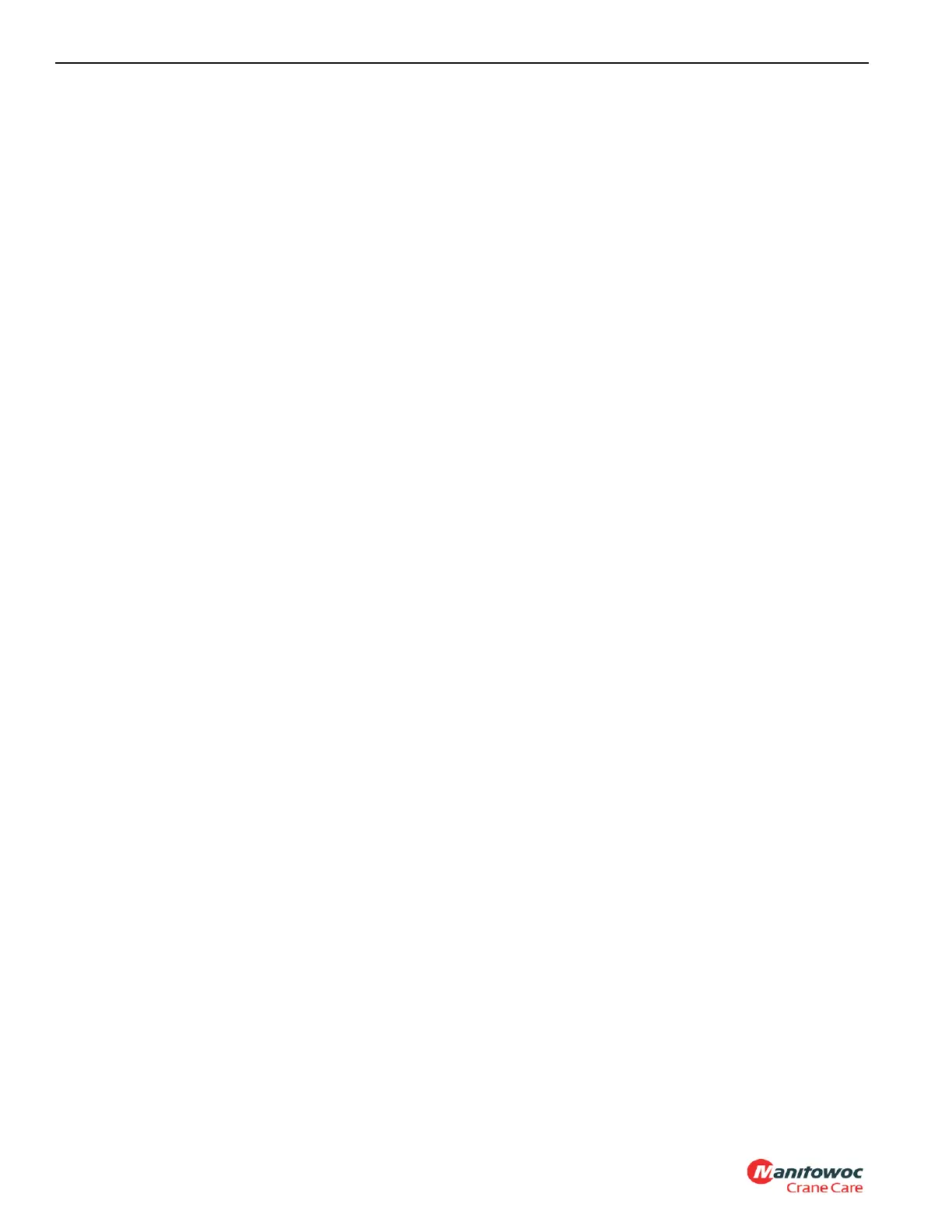7-6 Published 11-22-2016, Control # 345-12
POWER TRAIN RT9130E-2 SERVICE MANUAL
filler cap, chain-attached to the tank, and a fuel quantity
sender unit which provides a signal to a fuel level gauge on
the instrument panel in the Cab.
Injection Fuel Pump
The fuel oil is finely atomized as it is injected into the cylinder
and ignited by the heat of the compression. It is also metered
before injection, to meet the load requirements imposed
upon the engine. Surplus fuel, returning from the injectors, is
bypassed back to the fuel tank or to the inlet side of the
pump. The continuous flow of fuel through the injectors helps
to cool the injectors and to purge air from the system.
Fuel Filter-Water Separator
The primary fuel filter/water separator removes impurities
from the fuel and also removes water from the fuel before it
reaches the engine. The Primary Fuel Filter is located on the
frame beside the Fuel Tank. The Secondary Fuel Filter is
mounted on the right side of the engine hood.
The fuel mixture passes through the outer wrap of the first
stage of the filter paper, where large droplets of water are
formed as it is stripped from the fuel. The water falls out into
the void between the two paper elements and goes to a
reservoir in the bottom of the housing, where it can be
drained through a drain plug at the bottom of the housing.
The Water-in-Fuel Sensor is located in the Primary Fuel
Filter. Once the storage space in the bottom of the filter
housing fills with a certain amount of water, the sensor will
signal the ECM. The Water-in-Fuel Lamp will illuminate at
the operator controls, indicating that the water should be
drained from the fuel filter assembly.
Electric Lift Pump
The ECM controls the Electric Lift Pump located between the
Fuel Tank and the Injection Pump. Whenever the Keyswitch
is turned to the ON position, the lift pump will be energized
for a few seconds to make sure the low pressure fuel lines
are fully primed. The Electric Lift Pump shuts off after the
engine is started.
Maintenance
NOTE: The entire fuel system must be maintained air tight
to prevent loss of prime.
Fuel Tank
The Fuel Tank should be kept filled, especially overnight, to
reduce condensation to a minimum. Refer to the applicable
engine manual for the recommended schedule for draining
any water or sediment from the tank.
Removal
1. Position a suitable container under the Fuel Tank and
drain all fuel from the tank.
2. Tag and disconnect the two lines from the bottom of the
tank.
3. Disconnect the electrical lead from the Fuel Level
Sender unit.
4. Support the weight of the tank, loosen and remove the
nuts, washers and capscrews securing the straps to the
mounting brackets. Remove the tank and steps.
5. If a new tank is to be installed, remove the two fittings,
the fuel quantity sender, and steps from the tank and
install them on the new tank.
Installation
1. Position the tank on the mounting brackets and install
the nuts, washers and capscrews on the three straps.
Tighten the capscrews.
2. Connect the electrical lead to the Fuel Level Sender unit.
3. Connect the two lines to the fittings on the bottom of the
tank in accordance with the identification marks made
during removal.
4. Service the tank.
Fuel Filter-Water Separator
Draining
The sump of the Fuel Filter-Water Separators should be
drained daily, 30 minutes after the engine is shut down, to
remove any water and sediment. Adhere to the following
procedure.
1. Open the drain plug.
2. Drain into suitable container until fuel appears.
3. Close the drain plug.
